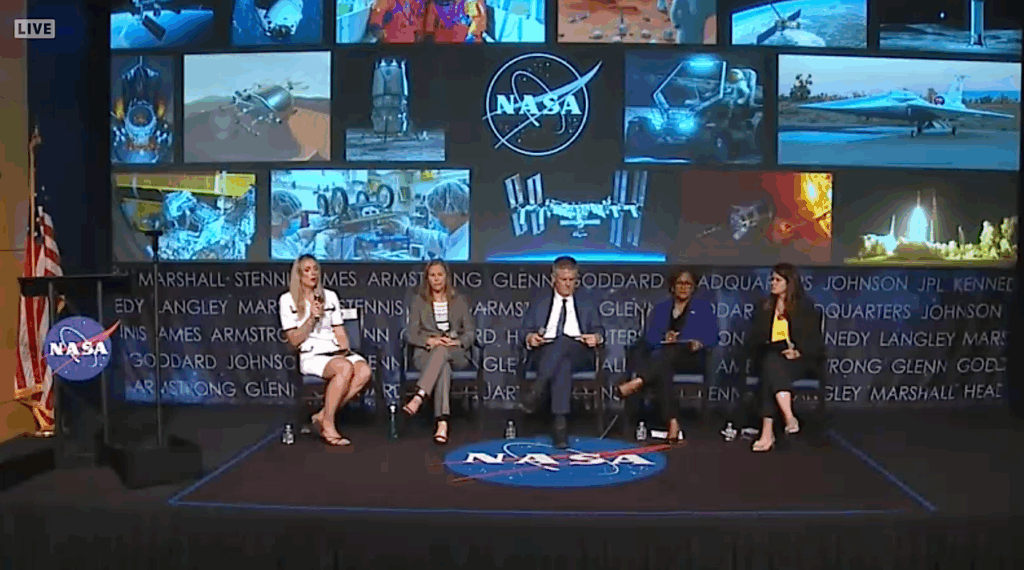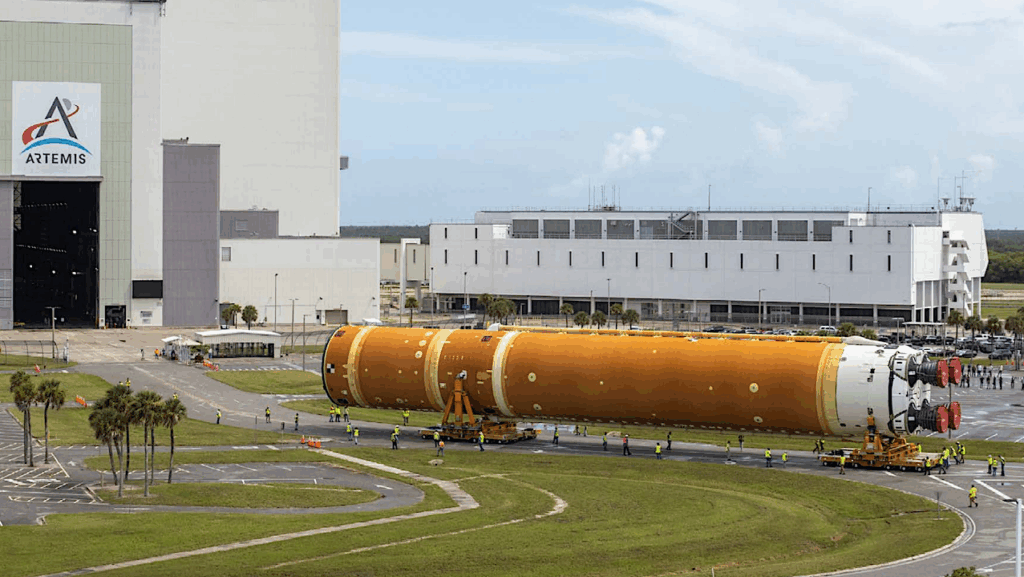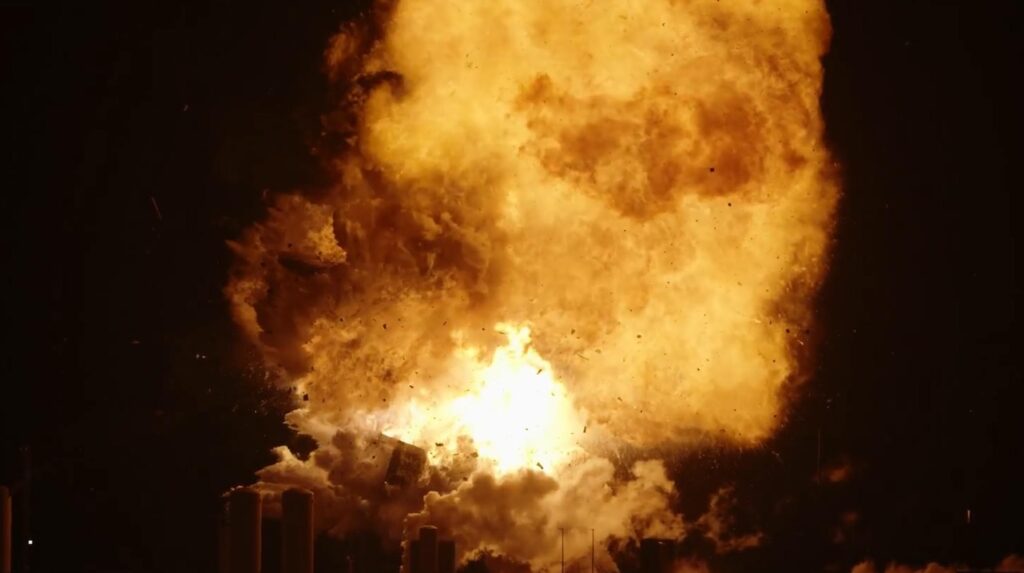OIG: NASA’s Readiness for the Artemis II Crewed Mission to Lunar Orbit

“As a test flight, Artemis I was used to examine how the integrated SLS and Orion and associated systems performed in their intended environment, allowing the Agency to confidently mitigate risks, certify system designs, and validate mission capabilities for future missions in the Artemis campaign. To this end, the Artemis I test flight revealed critical issues that need to be addressed before placing crew on the Artemis II mission. In particular, the test flight revealed anomalies with the Orion heat shield, separation bolts, and power distribution that pose significant risks to the safety of the crew. Resolution of these anomalies is among the most significant factors impacting NASA’s readiness for Artemis II. To its credit, the Agency is taking action to address these issues.” … “In particular, the test flight revealed anomalies with the Orion heat shield, separation bolts, and power distribution that pose significant risks to the safety of the crew.” Full report
11 responses to “OIG: NASA’s Readiness for the Artemis II Crewed Mission to Lunar Orbit”
Leave a Reply
You must be logged in to post a comment.









In the same timeframe I expect the Space X Starship “Dear Moon” mission will fly around the Moon. It will carry a dozen ‘artists’ on a circumlinar 1week flight and will be a much more interesting mission. It wont happen until there have been about 20 successful Starship missions. All in the next 2 years. It will be very interesting for its entertainment value alone amd will fly on a, by then, well tested vehicle.
In addition to Starship, Space X is planning an upgraded Dragon, launched by the Falcon Heavy, for cargo missions to Gateway.
So it seems like there are some relatively inexpensive options available that will use well tested and by then reliable vehicles.
It seems like NASA and Lockheed Martin are expending an awful lot of time and taxpayer money to try and recreate an upgraded Apollo capsule ro refly Apollo 8. It looks like they messed up on a few important things, like the heat shield. But perhaps more significantly, because of the expense, NASA is planning for only one month long Artemis mission each year. The other 11 months of each year presumable Gateway and Moonbase Alpha will need to be left untended. All because the dollars and scarcity of each Orion flight. And Orion is not even the reason for going. It constrains the entire program.
What if, using low cost reusable vehicles like Starship and Dragon we could have a continuously manned base on the Moon?
I wonder what a reimagined Artemis Program might look like without Orion or SLS?
Artemis 2 is currently set to launch within the next two years or so with most of the hardware finished and expected to start stacking in the VAB later this year.
DearMoon OTOH is currently vaporware and unlikely to happen before 2030.
HLS is already unlikely to happen before 2028 (or even later) and that will inevitably precede any crewed Starship launches.
Human rating Starship launch, entry and landing will be a big challenge, I personally don’t see it ever happening.
We will see soon enough how well Starship does. It ought to make its first Moonflight this year or next. Orion is only 15 years behind schedule so far and this report indicates that they may not be over their problems yet.
As it turns out DearMoon was canceled because it likely would have taken until the 2030s for that mission to happen and MZ wasn’t going to wait that long.
So much for that I guess!
SLS/Orion (Artemis 1) has flown at least one time. Starship has flown but not had the kind of mission that Artemis 1 had. Who is ahead? It is not easy to say. SpaceX and Falcon and Dragon have done some amazing things but we can’t say who is ahead right now.
Orion and SLS (Ares 5) have been in development since 2004; 20 years. It uses mosified Shuttle SRBs and unmodified SSMEs. This report says it is not safe yet. Starship has been in development since 2014; 10 years. It is a new roxket, with new engines, with a new spacecraft. Artemis flew one flight. It made it back to Earth, though this report says it was as much by chance as by design and that it is not yet safe for humans. Starship has flown 3 times, making significant progress on every flight. The last ascent was very nearly perfect. Space X now is focusing on return dynamics. The return of the booster is something Space X is attempting. SLS simple discards the booster into the ocean. If you do not attempt great things then there is no achievement to be made. Likewise, Oriona 15 foot ‘capsule’ gets back thru the atmosphere and pops its parachutes, mission and life over. Perhaps they can salvage parts. Starship is a 150 ft, 27 foot in diameter intended multipurpose vehicle. It is the largest spacecraft ever orbited. It is attempting to make a controlled retrofire reentry. Once again it will be a great advance once achieved. Compare the two? There is little comparison.
Compare the 2. Artemis is a throwback to an earlier century using mostly scavenged parts from an earlier program. Starship will be agiant leap forward; as great a leap as the Falcon 9 rockets now launching daily have been over earlier rockets.
This OIG report is about why Artemis 2 may not be ready. Starship has already flown 3 times, each more successful than the previous. Dear Moon could very well fly in a year. No Earth landing is necessary for the Starship Moon lander. But of course there is no mission if the Orion heatshield fails t hold up.
As it turns out DearMoon was canceled not long after this because it was clear to everyone with a functioning brain that this mission wouldn’t happen for many years and the path to a crewed Starship was uncertain.
Too bad!
The Artemis 2 mission is very aggressive and asks the crew to accept a LOT of risk. Many of the concerns would be greatly minimized if the Artemis 2 mission was changed to be an Earth orbiting, and not going around the Moon, mission. If the Orion/Service Module went to a medium Earth orbit the heat shield would not be required to absorb the heat from a Lunar return orbit and if they had trouble with their systems they could reenter much more quickly.
Hopefully NASA will consider changing the orbit that Artemis 2 will go into.
What you propose is self-defeating. You propose to fly a mission in Earth orbit in order to eliminate the risk of going to the Moon? I guess in order to fly a mission on a timely basis even if it is not the intended goal? Having the planned year between missions was always a downfall of this program. That it has had to be stretched out to two years or longer is somewhat ridiculous, unless the intended goal is to simply expend dollars without ever flying. But if you intend to fly without achieving progress towards the intended goal? Why? Delaying the missions further effects risk. Vehicle components are aging. Personnel experience becomes stale; moreso if the experience is not applied even during a mission. This report says there is increased risk because critical components are not functioning as intended and so far they do not know the cause. They need to figure out the cause and fix the problem.